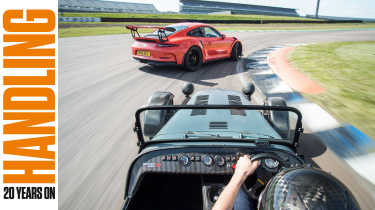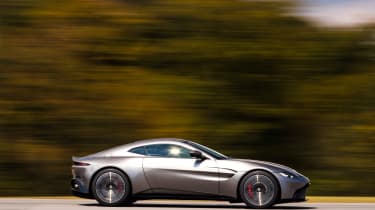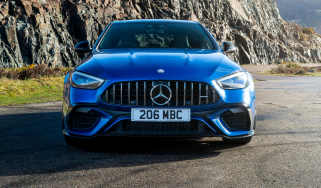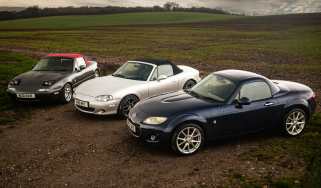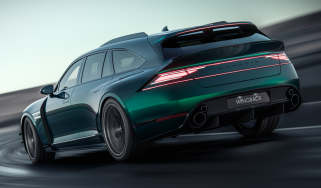Ask the experts: what makes a great handling car? Matt Becker
Matt Becker - Director, vehicle engineering, Aston Martin Lagonda
What’s the most important feature for a driver’s car?
The car must give all the necessary sensory information to make the driver feel connected on all levels. Responses to the driver’s inputs must always be linear to ensure the expected output – no unwanted surprises. Ergonomics, controls, throttle progression, brake feel, performance and gearshift must feel integrated and balanced. Having said that, perfection doesn’t necessarily make for the best driver’s car. A car needs to be driven, not driving you!
What’s the best-handling car you’ve driven?
It wasn’t the easiest car to drive fast, but I have very fond memories of the Elise Series 1 with the 190bhp VHPD engine.
What’s the best-handling current production car you’ve driven?
The latest Vantage, of course!
What car do you wish you had set up?
Porsche 911 GT3 RS. Porsche has done a great job of making this car engaging on all levels.
Can a bad-handling car be fun?
Yes. The Series 1 Elise wasn’t perfect; the fun was you had to be a good driver to extract the best performance from it.
If you had a maximum of £25,000 to spend, what car would you buy?
For trackdays an Elise or Exige, as an all-rounder a Golf R.
What car maker do you respect, and why?
Porsche. No matter what model it develops – SUV or sports car – it optimises the performance for the market segment and continually evolves and improves its products.
What do you think will be the next big thing in chassis development?
With ‘connected car’ and the development of 5G, chassis development will start to use more information from the road surfaces to further optimise chassis control: predicting the road surface rather than reacting to it.
Has electric power assisted steering (EPAS) made good handling easier to achieve?
EPAS systems are getting better as engineers understand what the basic steering ratio needs to be – faster than with hydraulic assistance – and as we get better at exploiting the software to tune for all speed ranges and driving modes. The trick is knowing what ‘good’ feels like.
Driver modes – useful or unnecessary?
Useful, to allow the car to have more than one personality. Done right, of course!
Is the Nürburgring useful to car set-up?
We use it for brakes, ESP, high-speed stability and durability, but we don’t compromise our cars just to work there. Ideally, we would use adaptive damping to tune a soft setting for road comfort and a firm setting for Nürburgring control, then use the software to cover all the road conditions in-between. Once a car achieves a target level around the Ring we know it can take anything a road can throw at it.
How do you make an all-electric car engaging for enthusiast drivers?
This is the question we are all developing an answer to, but as with EPAS and other new systems, you learn and develop the concept over time. You can use the electric motors to a very powerful effect by vectoring the torque to change the character and balance of the car. Autonomy will change the way OEMs set up cars – ride quality and NVH [noise, vibration and harshness] performance will become very key attributes when you start to remove driver involvement.

